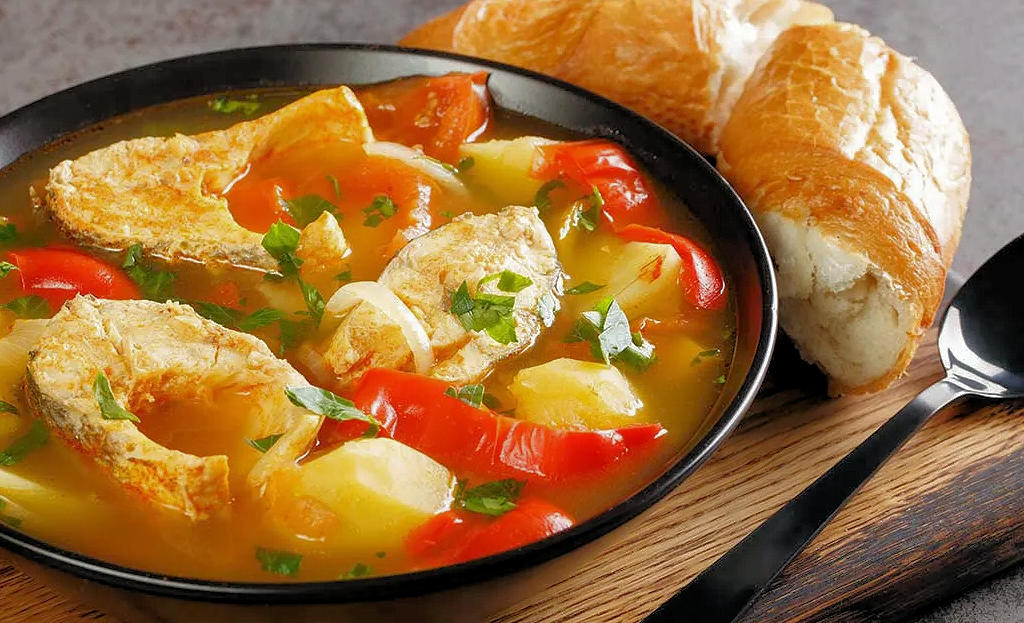In its essence, caldeirada de peixe is a celebration of the sea. The Portuguese coastline has long been a bountiful source of fish and seafood, and this stew pays homage to the abundance and variety of marine treasures found in these waters. While the specific types of fish and seafood used may vary depending on what is fresh and in season, the stew typically incorporates a medley of white fish, squid, prawns, clams, and mussels. It is through the harmonious combination of these ingredients that the true magic of caldeirada de peixe comes to life.
The preparation of this beloved dish begins with the creation of a robust and aromatic sauce. Onions, garlic, red peppers, and tomatoes form the foundation of this flavorful base. White wine, saffron, bay leaf, and an assortment of spices are added to elevate the taste to new heights. The sauce slowly simmers, allowing the ingredients to meld together, resulting in a harmonious blend of flavors that tantalize the palate.
To truly savor caldeirada de peixe, it is customary to serve the stew with fresh bread. The crusty exterior of the bread provides the perfect vessel for soaking up the luscious sauce, ensuring not a drop of flavor goes to waste. As friends and family gather around the table, the sharing of this cherished dish fosters a sense of togetherness and conviviality, embodying the warmth and hospitality of Portuguese culture.
One cannot overlook the historical significance of caldeirada de peixe. Its origins lie with the fishermen who relied on their daily catch to sustain their families. Seeking to utilize every part of the fish, including the less desirable head, tail, and bones, these resourceful individuals created a dish that transformed humble ingredients into a culinary masterpiece. Over time, this stew became deeply ingrained in Portuguese culture, transcending its humble beginnings to become an emblem of tradition and ingenuity.
Lisbon.vip Recommends
It is worth noting that caldeirada de peixe is a dish that allows for personalization and adaptation. With no fixed recipe or set of ingredients, each cook can infuse their own creative flair and adapt the dish to suit their individual preferences. Whether one prefers a milder version or desires to add a fiery kick with chili or paprika, the versatility of caldeirada de peixe ensures a culinary experience tailored to one's taste.
As one indulges in a steaming bowl of caldeirada de peixe, they are not merely savoring a stew; they are partaking in a narrative that spans generations. This dish stands as a testament to Portugal's rich heritage, celebrating the ties that bind its culture to the sea and the wider world. Whether enjoyed during festive occasions such as Easter and Christmas or shared amongst loved ones on a tranquil evening, caldeirada de peixe is a culinary masterpiece that embodies tradition, diversity, and the enduring spirit of Portuguese cuisine.



